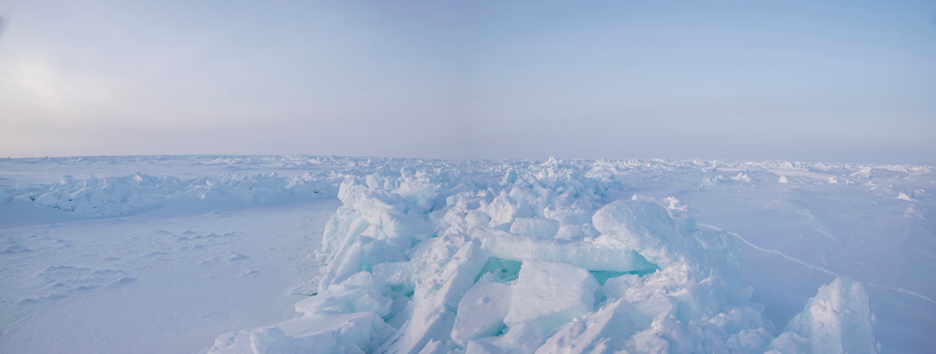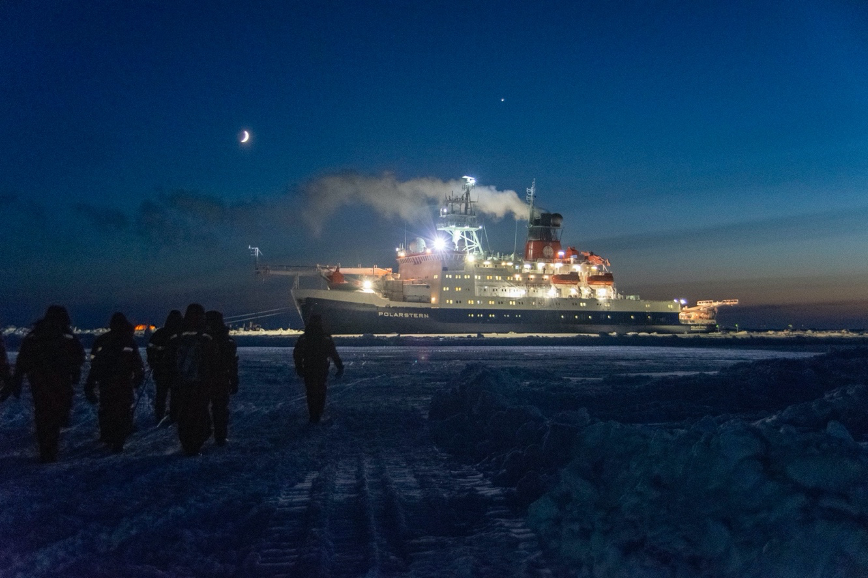
By Emily Fischer, Goddard Space Flight Center
In the early 1900s, Ernest Shackleton attempted to travel across Antarctica, but as they neared the continent his ship became stuck in an pack of sea ice and was slowly crushed before it reached the landmass. Over 100 years later and on the opposite side of the globe in the Arctic, researchers in the massive, double-hulled icebreaker, Polarstern, are also stuck in a pack of sea ice – but this time on purpose. And this ship isn’t sinking any time soon.
Polarstern is the operational center for the Multidisciplinary drifting Observatory for the Study of Arctic Climate, or MOSAiC. The first expedition of its kind, MOSAiC is an international mission exploring the Arctic climate system year-round, with more than 100 scientists and crew members from 20 nations living aboard the research vessel.
Intentionally trapping itself in the sea ice, Polarstern drifts with the floe, which is a large pack of floating sea ice. Researchers set up “little cities” on the ice where they take measurements using delicate instruments. While it appears that the sea ice they walk on to reach these camps is stationary, everything is actually slowly drifting as wind and ocean currents push the gigantic slabs of ice.
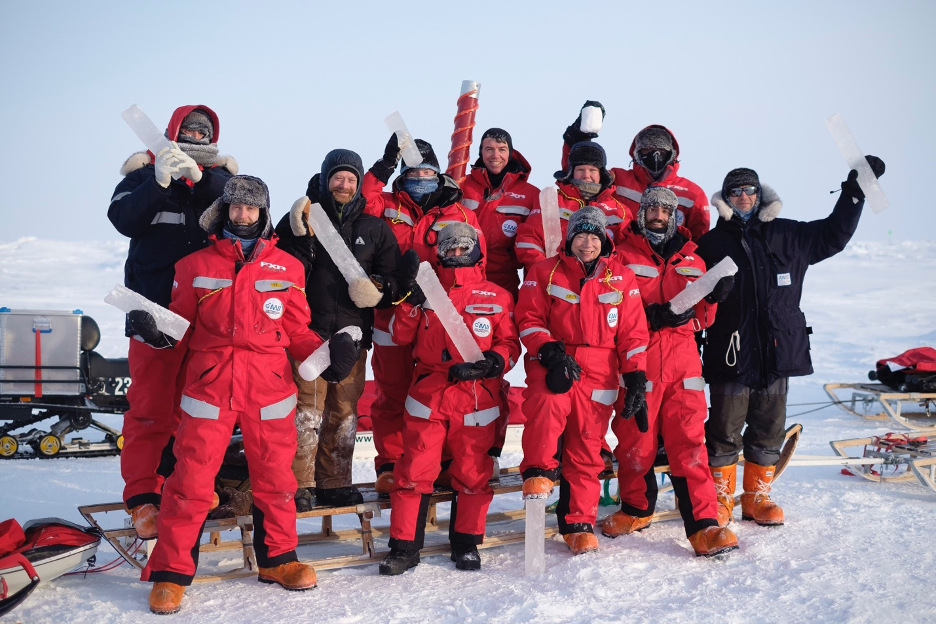
MOSAiC is a multidisciplinary expedition, as researchers from a variety of fields – including marine biology, meteorology, and oceanography – collaboratively study Arctic changes.
“It’s more of a process study,” explained Steven Fons, a Ph.D. candidate at the University of Maryland and NASA’s Goddard Space Flight Center, who studied sea ice from March to May of this year. “The idea, then, is once everybody collects this data, we can compile everything and learn about the sea ice in the ocean, and the atmosphere and the ecology.”
Sea ice is an integral part of the Arctic climate system because it sits directly between the ocean and the atmosphere, moderating the exchange of heat and moisture. An important climate indicator, sea ice research identifies changes in other Arctic climate systems, including the ocean, atmosphere, ecology, and biogeochemical cycles. Basically, studying sea ice can give greater insight into how the entire Arctic is reacting to climate change.
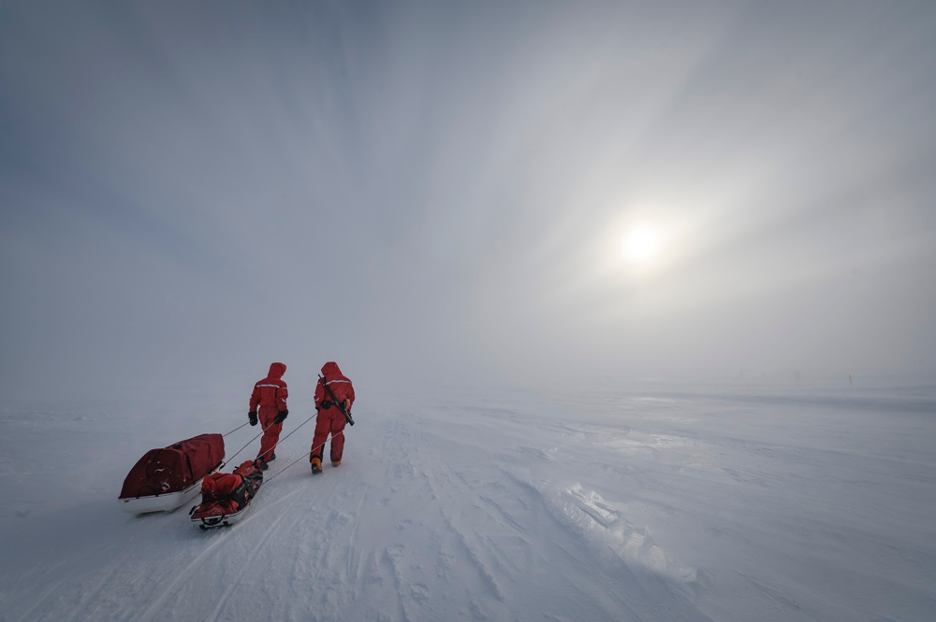
For a small group of MOSAiC researchers, every Monday was a 14-hour workday spent at “Dark Sites,” named so because they are isolated from the bright lights of Polarstern. After traveling over a mile on snow machine, the team used hollow drills to remove cylindric cores from the sea ice floe. In the labs aboard Polarstern, these samples revealed the fascinating characteristics of sea ice.
“As ice forms, it will eject the salt away as it’s freezing,” said Fons. “The longer it stays around, the more salt essentially drains out of it.” Basically, high salt levels tell researchers that this particular ice formed in the most recent winter. This can reveal how the Arctic adjusts to higher temperatures, as the region is warming at a rate more than twice the global average.
In the Arctic, wind chill can reach frigid temperatures as low as minus 70 degrees Fahrenheit. Working in the cold without hand protection was impossible, so Fons wore thin gloves underneath his bulky mittens, which he removed when handling small objects. Even so, frequent warming breaks were necessary, which meant simple, one-minute tasks could take 10 times longer in Arctic conditions.
“Some of the really cold days, you can only last 30 seconds at a time taking off your big mittens,” he recounted. “You just have to put five zip ties on this cable, perfect. It should take one minute to do, but it would take 20 minutes because you have to keep warming your hands and [the zip ties] keep breaking in the cold.”
Native to Wisconsin, Fons is no stranger to subzero winters. Nonetheless, during this expedition he witnessed temperatures unlike anything he had ever experienced before. Icy winds bit into any exposed skin. His only relief: a thick, bushy beard and about ten layers of clothing.
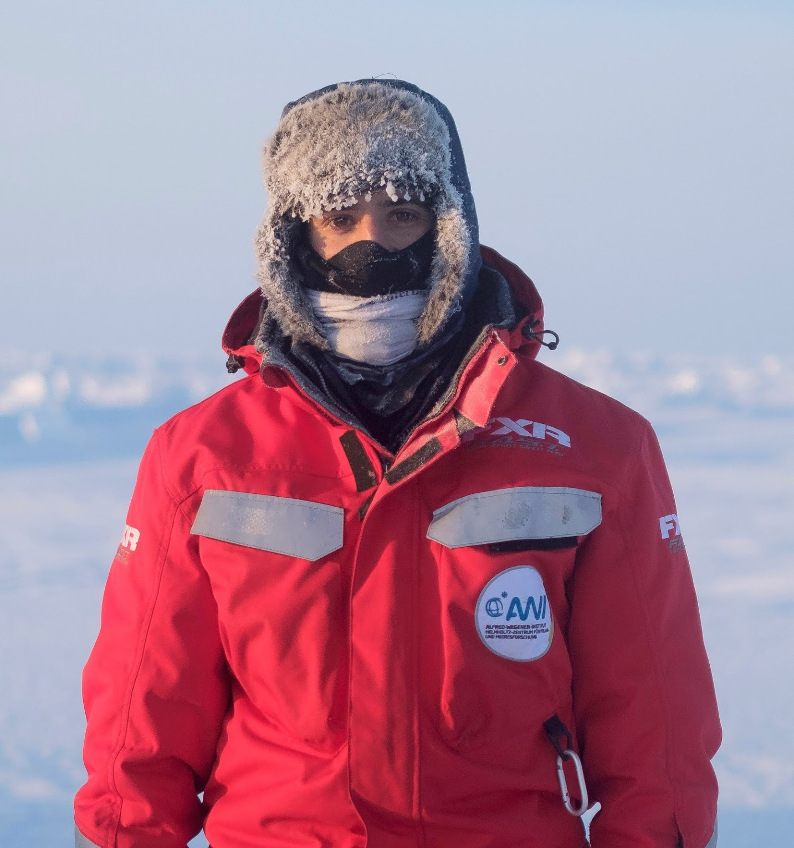
In an ever-changing environment, researchers’ locations can be difficult to determine on the ice cover, which can literally shift beneath their feet. For MOSAiC, every measurement is paired with a GPS coordinate. However, the ice drifts, and so the latitude and longitude change every day. Instead, the immense icebreaker Polarstern is used as a point of reference, a sort of ground zero for field navigation.
“You’re given a position away from the ship, so a certain distance of x and y, and that will theoretically never change,” Fons explained. But even this system has its obstacles. “If the ice broke up and the ship moves a little bit, then you can lose your x-y positions, so it didn’t always work.”
Helicopters and planes accompany Polarstern, getting a birds-eye view of the stark white landscape. Flying high above the floe, planes take airborne measurements in a similar way to Operation IceBridge. Fons does research using data from NASA’s ICESat-2 – the satellite that surveys glaciers and sea ice around the globe – and he was lucky enough to validate some of the satellite’s measurements while researching with MOSAiC.
“On the ship, since we’re constantly drifting with the ice, we don’t exactly know where we’re going to be on any given day,” he said. “We got lucky that we happened to be drifting one day over a spot that ICESat-2 was going to fly over. We were able to jump on that opportunity and schedule a helicopter flight.”
Seasonal changes near the poles are unlike anywhere else on Earth. Summer and winter are really the only seasons these regions experience, characterized by a dramatic transition between complete darkness during winter days to total sunlight during the summer. Ten days after reaching Polarstern, Fons witnessed his first Arctic sunrise. As summer came, the Sun sailed over the horizon for longer and longer each day until it refused to set, resulting in the phenomenon of the “midnight sun.”
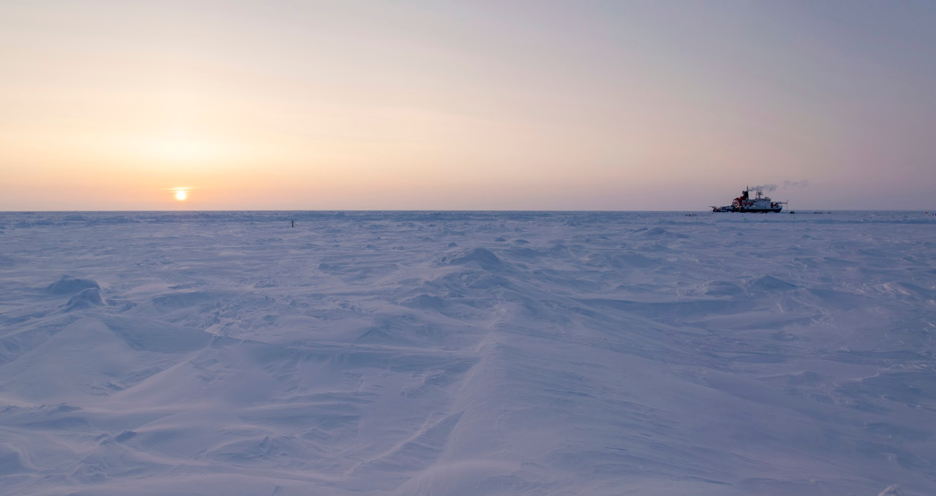
Ice dynamics, or the movement of ice slabs in the floe that changes the terrain, were a trademark of Fons’ three months on Polarstern. Sometimes, the researchers would wake up to massive leads, or ice fractures, blocking their usual routes. Other days, research tents would be buried in ice piles from leads that closed to form towering ridges. Sea ice dynamics had a wide appeal for study among MOSAiC teams. Below the floe, marine biologists and ecologists studied microorganisms. Within the ice itself, sea ice researchers examined crystallization patterns.
“With MOSAiC, what people are able to do is look at the ice at so many different scales and through many different lenses,” Fons summarized.
